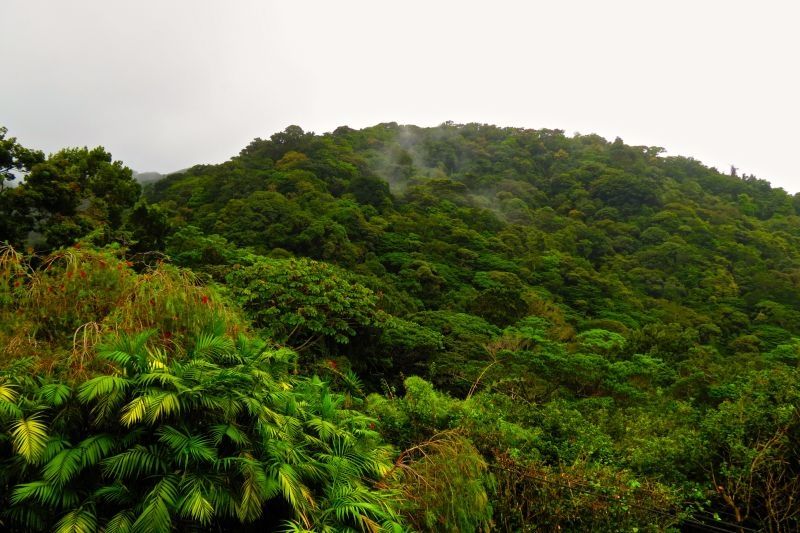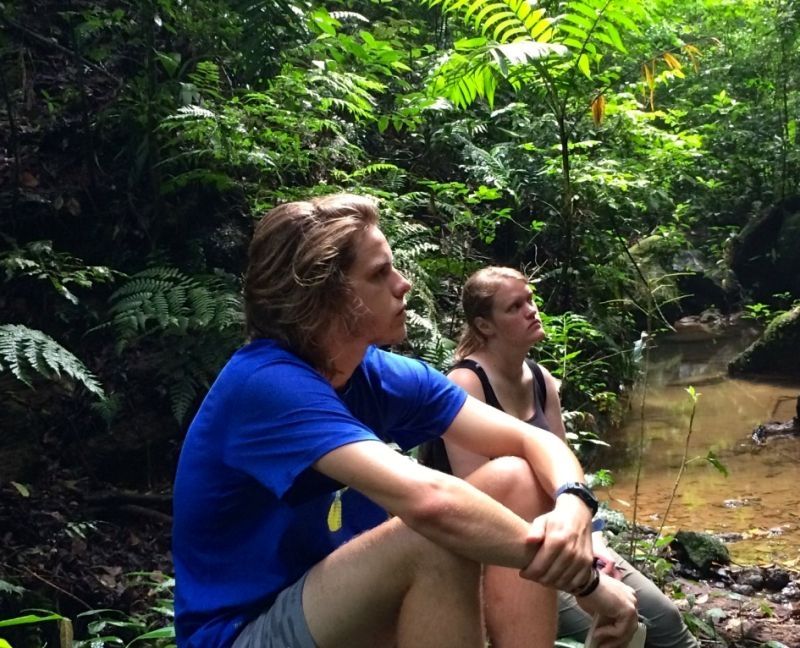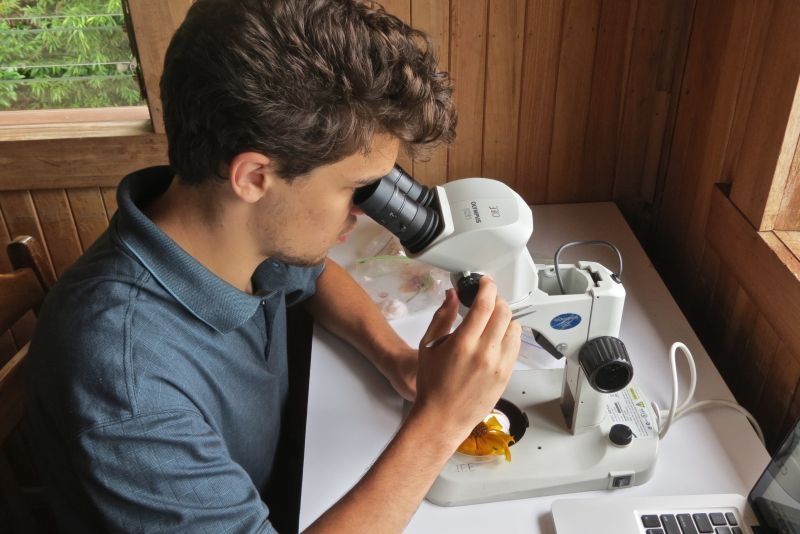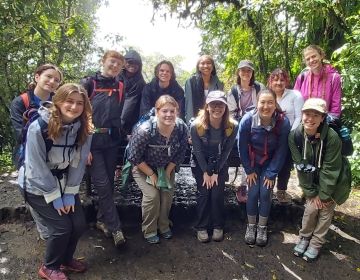The forest is our classroom
When we arrived to Monteverde we thought our lectures will be more like a normal day of class back in our campuses in which we will spend time learning about different topics inside a classroom, taking notes, having breaks and taking midterms; and yes part of that happen during the next couple of weeks, but being right next to the forest while you learn about tropical ecology its a great opportunity to go out everyday and experience first hand those topics we learn in the classroom.
Using the forest as part of our classes make lectures way more interesting, but at the same time it gives you a better understanding of the concepts cover in class. Learning about the structural diversity of the forest, the different plant growth forms and their adaptations to subsist in the habitat they live while you are sitting by a stream in the middle of the forest gives you a different perspective of the forest and a better understanding of why the forest is structured the way it is and all those adaptations we see on plants.
View of our "classroom" from the Biological Station.
Jimmy Webb (University of Arkansas) and Amanda Ogden (Utah State University) learning first hand about adaptive strategies of different plant growth forms.
Another important topic to fully understand tropical biology it is biodiversity and why are the tropics so diverse, and of course we will not learn this just sitting in a class looking at a Power Point presentation on a screen, so as an activity to understand biodiversity better and get familiarized with biodiversity statistics we look at two different species of flowers, one native (Daisy) and one introduced (Hibiscus) and look at the different species and number of arthropods found in them.
Derek Frank (University of Minnesota-Twin Cities) looking for arthropods on a Daisy flower.
Intensively looking for hidden arthropods in the Daisy and Hibiscus flowers. Sarah Aitken (University of Pennsylvania) and Amanda Ogden (Utah State University) do not wanna miss any small creature found there.
Some of the arthropods found on the Daisy flowers.
Thrips (Order Thysanoptera) were the most common arthropods found in both species of flowers.
But not all the time we spend here are lectures, as a good practice for our upcoming Independent Research a couple of days we developed project ideas in which we collected data in the morning, analyze the data and make a presentation in the afternoon and presented our results at night. These projects included topics like avoidance of leafcutter ants (Atta cephalotes) for plants with anti-fungal properties, seed predation and caching behavior by Agoutis (Dasyprocta punctata) with seeds found at different depth on the leaf litter, number of founders Agaonidae wasp on figs (Ficus) syconia, and niche partitioning of bark beetles (Scolytodes) in Cecropia petioles. This field problem experiments gave us a better idea of the challenges we will be facing for the Independent Research and also give some input about project ideas for the students.
Drew Rosso (University of Notre Dame) studying the selection of leaf fragments with and without anti-fungal properties by leaf cutter ants (Atta cephalotes).
Some leafcutter ant (Atta cephalotes) workers checking fragments of leaves with no anti-fungal properties.
Three different species of bark beetles of the genus Scolytodes inhabit fallen petioles of Cecropia leaves in the Monteverde area; here Vikram Norton from the University of Massachusetts-Amherst check the different areas of the petiole looking for some beetles.
Related Posts
Costa Rica vs. Argentina: Which is Better for Study Abroad?
Imagine yourself sipping mate in a bustling Buenos Aires café or lounging peacefully in a hammock overlooking Costa Rica's lush rainforests. These contrasting scenes represent just a glimpse of the... keep reading
Happy Earth Day: Today and Every Day
Happy Earth Day! Every April 22, this global event comes around to remind us how precious our planet is, what sustainable efforts we can make to protect Earth, and that... keep reading
Top 10 Study Abroad Volunteer Opportunities with CIEE
Have you ever wondered if you could volunteer abroad? Perhaps you're looking into study abroad programs that provide international volunteer opportunities. If you’re itching to study abroad and truly make... keep reading







